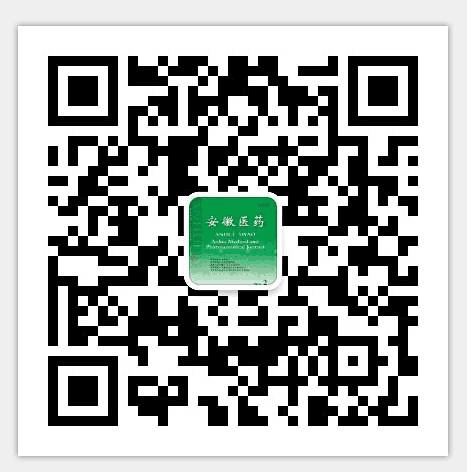| 王琳.血清IL-6、TLR4水平对结直肠癌患者根治术后早期炎性肠梗阻的诊断价值[J].安徽医药,待发表. |
| 血清IL-6、TLR4水平对结直肠癌患者根治术后早期炎性肠梗阻的诊断价值 |
|
| 投稿时间:2025-02-06 录用日期:2025-05-08 |
| DOI: |
| 中文关键词: 结直肠癌 炎性肠梗阻 白细胞介素-6 Toll样受体4 诊断 |
| 英文关键词: |
| 基金项目:2022年沧州市科技计划自筹经费项目(编号:222106074) |
|
| 摘要点击次数: 77 |
| 全文下载次数: 0 |
| 中文摘要: |
| 目的:探讨结直肠癌患者血清白细胞介素-6(IL-6)、Toll样受体4(TLR4)水平对根治术后早期炎性肠梗阻的诊断价值。方法:纳入2021年3月~2022年3月本院收治的行结直肠癌根治术109例患者为观察组,并根据患者术后1个月内炎性肠梗阻情况分为肠梗阻组14例和非肠梗阻组95例;同期纳入本院行健康体检的106例健康人群作为对照组。采用ELISA法检测术前、术后3 d、术后5 d血清中IL-6、TLR4水平;采用Spearman法分析血清IL-6、TLR4水平与临床资料的相关性;采用多因素logistic回归分析筛选结直肠癌患者根治术后早期炎性肠梗阻的影响因素;采用ROC曲线分析指标的诊断价值。结果:观察组术前血清IL-6、TLR4水平高于对照组(P<0.05)。肠梗阻组术后3 d、术后5 d血清IL-6、TLR4水平高于非肠梗阻组(P<0.05);肠梗阻组术前、术后3 d、术后5 d血清IL-6、TLR4水平依次升高(P<0.05);血清IL-6、TLR4水平的时间因素和组间因素均存在交互效应(P<0.05)。肠梗阻组肿瘤位于直肠、肿瘤直径≥5 cm、临床分期Ⅲ期比例高于非肠梗阻组(P<0.05)。结直肠癌患者血清IL-6、TLR4水平与肿瘤直径、临床分期呈正相关(P<0.05)。IL-6、TLR4是结直肠癌患者术后早期炎性肠梗阻的独立危险因素(P<0.05)。IL-6、TLR4单独及联合诊断结直肠癌患者术后早期炎性肠梗阻的AUC为0.845、0.847、0.974。结论:结直肠癌患者术后早期炎性肠梗阻患者血清IL-6、TLR4水平显著升高,二者联合对早期炎性肠梗阻的诊断有重要临床价值。 |
| 英文摘要: |
| Objective: To investigate the diagnostic value of serum interleukin-6 (IL-6) and Toll like receptor 4 (TLR4) levels in patients with colorectal cancer for early postoperative inflammatory bowel obstruction. Methods: A total of 109 patients who underwent radical resection for colorectal cancer admitted to our hospital from March 2021 to March 2022 were included as the observation group, and were assigned into an intestinal obstruction group of 14 patients and a non intestinal obstruction group of 95 patients based on their inflammatory intestinal obstruction within one month after surgery. During the same period, 106 healthy individuals who underwent health examinations in our hospital were regarded as the control group. ELISA method was applied to detect the levels of IL-6 and TLR4 in serum before surgery, 3 days after surgery, and 5 days after surgery. Spearman method was applied to analyze the correlation between serum IL-6, TLR4 levels and clinical data. Multivariate logistic regression analysis was applied to screen the influencing factors of early inflammatory bowel obstruction in colorectal cancer patients after radical surgery. ROC curve was applied to analyze the diagnostic value of indicators. Results: The preoperative levels of serum IL-6 and TLR4 in the observation group were higher than those in the control group (P<0.05). The levels of serum IL-6 and TLR4 in the intestinal obstruction group were higher than those in the non intestinal obstruction group at 3 and 5 days after surgery (P<0.05); the levels of serum IL-6 and TLR4 in the intestinal obstruction group increased sequentially before surgery, 3 days after surgery, and 5 days after surgery (P<0.05); there were interaction effects among time factors and inter group factors in serum IL-6 and TLR4 levels (P<0.05). The proportions of tumors located in the rectum, a diameter of ≥ 5 cm, and clinical stage III in the intestinal obstruction group were higher than those in the non intestinal obstruction group (P<0.05). The levels of serum IL-6 and TLR4 in colorectal cancer patients were positively correlated with tumor diameter and clinical stage (P<0.05). IL-6 and TLR4 were independent risk factors for early postoperative inflammatory bowel obstruction in colorectal cancer patients (P<0.05). The AUC of IL-6 and TLR4 alone and in combination for diagnosing early postoperative inflammatory bowel obstruction in colorectal cancer patients was 0.845, 0.847, and 0.974, respectively. Conclusion: The levels of serum IL-6 and TLR4 are greatly elevated in patients with early postoperative inflammatory bowel obstruction of colorectal cancer. The combination of the two has important clinical value for the diagnosis of early inflammatory bowel obstruction. |
|
查看/发表评论 下载PDF阅读器 |
| 关闭 |


